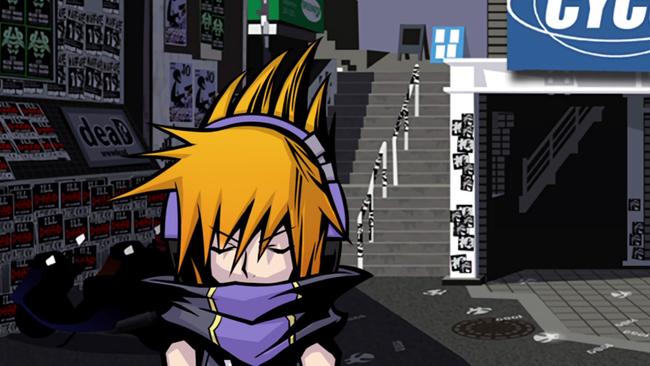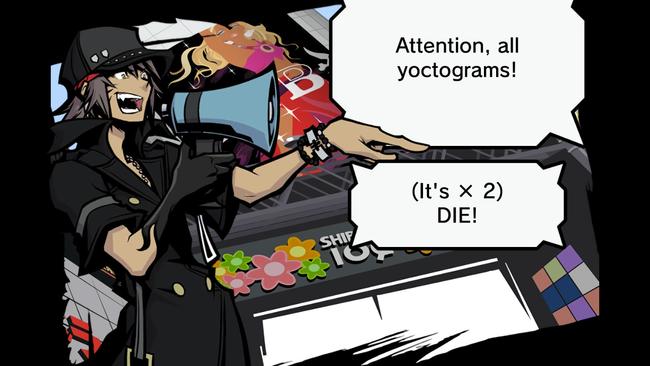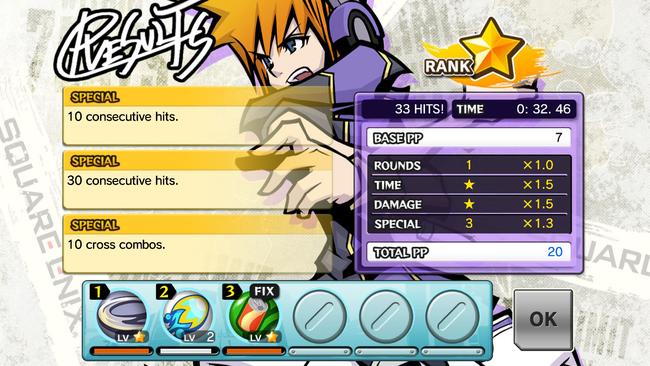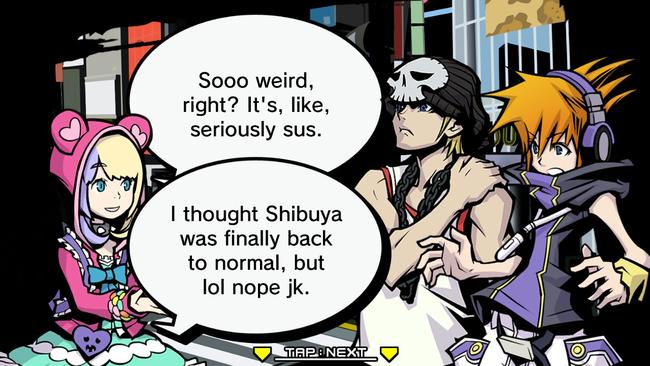The World Ends With You: Final Remix Review
The World Ends With You is essentially a cult classic at this point. Initially released on the Nintendo DS in 2008, the RPG is well-loved by most who’ve played it, but with only a mobile port and a lack of a sequel, it remains relatively unknown. The Switch port The World Ends With You: Final Remix hopes to bring the unique RPG to a new audience. Does TWEWY still hold up after a decade?

The World Ends With You stars Neku, an antisocial teenager who really just wants everyone to leave him alone. Neku wakes up in the middle of Shibuya with no memories and is forced to participate in The Game. Survive seven days and the winners will be brought back to life. That’s right, Neku and many of the other characters you meet in TWEWY are already dead, and they’re working towards a second shot at life.
TWEWY is a wildly unique game, with a story that takes some unexpected and dramatic turns. As Neku and the others play The Game, they learn more about this underground Shibuya filled with danger that exists simultaneously with the peaceful “real world” Shibuya. Reapers are out to erase Players’ souls (lest they get erased themselves), Players must complete missions to survive the week, and button pins are the ultimate source of power in this strange world. It all works pretty well, and Shibuya being the setting also helps in bringing the tale together.
Shibuya is considered one of the forefronts of fashion and style on the planet, and TWEWY takes advantage of that with a multitude of systems. Certain brands of clothing will be popular in one area but considered the worst just a street over, so players fighting more difficult battles need to be conscientious of what they’re wearing or Neku and his partner will be fighting at a massive disadvantage. However, you need to also take into account the character’s Bravery stat. More outlandish and standout outfits are generally stronger stat wise, but if the character doesn’t have the Bravery to wear it, then you’re stuck equipping them with what could be lower end gear.

This attention to style and asthenic also makes its way to TWEWY’s graphics and soundtrack. One of my worries playing this version of the game, a decade after the DS release, was that a lot of the game’s inspiration of ever-changing trends may age TWEWY and make the title harder to enjoy, particularly with cel-shaded graphics and unique but catchy soundtrack. Thankfully my fears are unfounded, as both of these aspects of the game still hold up today. Most of the graphics got an upgrade from the DS version, featuring redrawn characters models and more. It looks good in Handheld and TV mode, which is surprising given TWEWY’s original system. The soundtrack is just as catchy as ever, too--I still can’t get the songs out of my head since starting up the game for this review!
One of the things that did get changed up a lot from the DS version of TWEWY, however, was the battle system. The original version of the game used the DS’s capabilities to the fullest extent, using both screens to control both Neku and his partner in frantic real-time battles. When TWEWY was released on mobile devices, however, the developers had to condense this action to one screen. Final Remix uses the same base battle system as Solo Remix (the mobile version) with a couple tweaks.

Battles in Final Remix take place on one screen, and players will only be controlling Neku. In Handheld Mode, you’ll be using the touchscreen (and only the touchscreen) to move Neku and have him attack. How you can attack foes depends on what Pins you have equipped. For example, one Pin may have you simply tap an enemy to begin an attack, or you may have to quickly draw a circle around Neku to put up a damaging barrier. Your partner is also their own special pin, and doing the right action will summon them onto the field, beginning their own combos that you can chain Neku’s attacks with. Partners don’t take damage, so it’s always helpful to have them out when you can. Frankly, the battle system has quite the learning curve, and it takes a lot of trial and error to figure out which Pins work best, but once it finally clicks battles become intense and fun…
...At least, in Handheld mode. Final Remix also has a second control scheme for those that don’t want to mess with the touchscreen or want to play TWEWY on the TV. This other control scheme uses one Joycon as a pointer to control Neku, and a few of the buttons to help reset the pointer as needed and a few other tasks. TWEWY’s battles require a lot of exact motions to pull off attacks and simply move Neku, and trying to do anything with the Joycon was incredibly frustrating. I tried this secondary control scheme a number of times, but could never get used to it. Battles that were originally very easy became gauntlets with the Joycons, and I can only recommend playing Final Remix in Handheld mode, with the precision of the touchscreen.
Granted, even with the touchscreen, you can run into difficulty clearing certain battles, or even find the game too easy at times. TWEWY offers a lot of options for tweaking your difficulty, and making battles riskier comes with a plethora of rewards. There’s the usual difficulty select that you can change at any time, but you can also lower your level. If you’re not fighting at max level, the drop rate for items goes up by how many levels you’ve taken away. On top of that, you quickly unlock the ability to chain Noise battles to multiply your drop rate. So if you chain four battles together while lowering Neku’s level by five, your drop rate increases to twenty.

This all works together better than clumsy explanation sets it up to be, and I really enjoyed making the game just challenging enough to get lots of bling while not making every fighting a struggle. You can also lower your level for normal fights while resetting it for boss battles… though TWEWY is rarely good about signaling boss battles to always let you do so.
It’s sort of amazing how all these weird mechanics and quirks work together, though TWEWY isn’t without its flaws. For starters, the main plot leaves a lot of questions unanswered, which the game urges you to find the answers to with Secret Reports. Secret Reports are extra missions to complete in each day, and they aren’t the easiest to get. All of the post-game content also has a harsh difficulty curve, and collecting items requires a copious amount of grinding. It’s strange that the main game is on the short side, but the amount of grinding needed to get answers to some of the plot’s questions are put behind such high barriers.

This somewhat extends to A New Day, the new scenario added to Final Remix. Unlocking the new story bits requires finding and defeating the purple Reaper’s challenges, which place ‘curses’ on Neku (like constantly losing HP or enemies multiplying if you don’t kill them quickly enough), which is extremely difficult when you first come across them. When unlocking A New Day, every battle has some of these curses added on. It’s a cool twist on the battles from the main game, though it can make battles extremely difficult, or just really long.
As for the plot to A New Day, Neku and his partner must now go through The Reaper’s Game: Expert Mode, but things about Shibuya just don’t seem quite right. The story also features the girl that was teased in the mobile version of TWEWY. I found A New Day to be a nice addition, but ultimately not completely necessary to fully enjoy the original plot (Secret Missions aside).
I would recommend Final Remix not because of the new content, but for enjoying an older RPG in a more accessible format. The World Ends With You making it to the Switch means that a wider audience gets to enjoy this unique title, and the game is worth revisiting even for those that have already completed the DS version of the title. TWEWY is by no means a perfect game, but it has a lot of charm, and sometimes that can be what matters most.